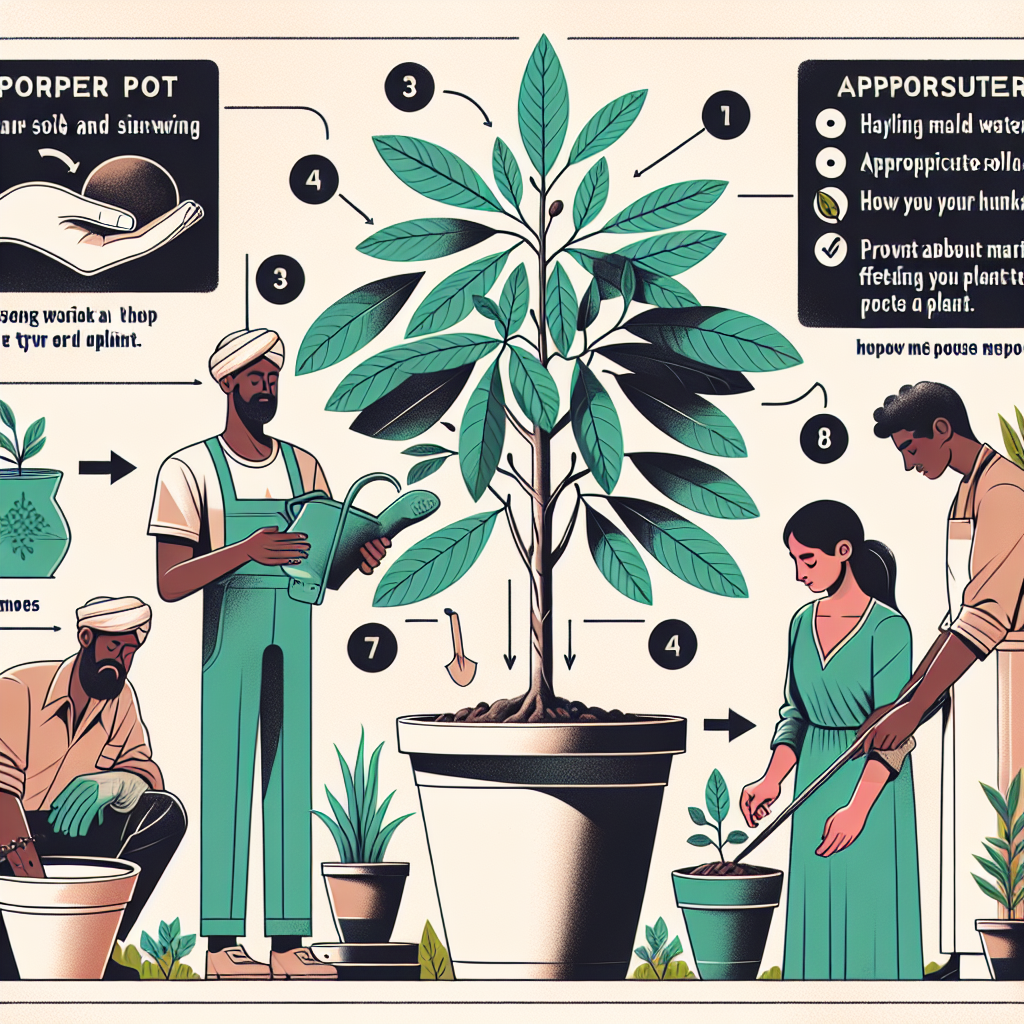
How to care for a money tree plant
How to Care for a Money Tree Plant: A Comprehensive Guide
Money tree plants, scientifically known as Pachira aquatica, have gained immense popularity for their striking appearance and supposed ability to attract prosperity and good fortune. These tropical plants are relatively low-maintenance, making them an excellent choice for both novice and experienced plant enthusiasts. In this guide, we will explore essential aspects of caring for your money tree plant to ensure it thrives in your home or office.
Understanding the Money Tree Plant
The money tree plant is native to central and southern America and is known for its unique braided trunk and lush green foliage. In many cultures, it's believed that keeping this plant brings wealth and good luck, hence its name. Money trees can grow up to 6-8 feet tall in their natural habitat, but typically remain smaller when kept indoors.
Light Requirements
One of the most critical factors in caring for a money tree plant is providing it with the right amount of light. These plants thrive in bright, indirect sunlight but can also adapt to lower light conditions.
- Bright, indirect light: Ideal for optimal growth.
- Partial shade: Acceptable, especially if the plant is acclimated.
- Avoid direct sunlight: Can scorch the leaves, resulting in damage.
When placing your money tree, consider a spot near a window where it can get filtered sunlight. If natural light is limited, you might consider using artificial grow lights as a supplement.
Watering Your Money Tree Plant
Watering correctly is crucial to ensure your money tree plant remains healthy. Overwatering is one of the most common issues that can lead to root rot, while underwatering can cause the leaves to drop.
- Frequency: Water your money tree every 1-2 weeks, allowing the top inch of soil to dry between waterings.
- Check the soil: Stick your finger into the soil; if it feels dry, it’s time to water.
- Drainage: Ensure your pot has drainage holes to prevent water accumulation.
When watering, it’s best to do so thoroughly until it drains from the bottom. This ensures that the entire root system receives moisture.
Humidity and Temperature Preferences
Money tree plants are tropical plants and enjoy humidity. Maintaining an appropriate level of moisture in the air around your plant can promote healthier growth. Here are some tips for managing humidity and temperature:
- Humidity: Aim for around 40-60% humidity. You can use a humidifier or a pebble tray filled with water to increase moisture.
- Temperature: Ideal temperatures range from 65°F to 80°F (18°C to 27°C). Avoid placing the plant near drafts or temperature fluctuations.
Feeding Your Money Tree Plant
Nourishing your money tree with nutrients is vital for its growth. Use a balanced, water-soluble fertilizer during the growing season (spring and summer).
- Type: Use a balanced fertilizer with equal parts nitrogen, phosphorus, and potassium (e.g., 20-20-20).
- Frequency: Fertilize every 4-6 weeks during the growing season.
- Reduce feeding: In fall and winter, the plant enters a dormant phase, reducing the need for fertilizer.
Be cautious not to over-fertilize, as this can lead to nutrient burn and harm your plant.
Repotting Your Money Tree Plant
As your money tree plant grows, it may require repotting to provide more space for its roots. Here are some guidelines for repotting:
- Frequency: Repot every 2-3 years or when the plant becomes root-bound.
- Pot size: Choose a pot 1-2 inches larger in diameter than the current one.
- Soil type: Use a well-draining potting mix, preferably a mix designed for indoor plants.
Gently remove the plant from its current pot, trim any damaged roots, and place it in the new pot with fresh soil. Water thoroughly after repotting.
Pest Management
Like all indoor plants, money trees can be susceptible to pests. Here are common pests and how to manage them:
- Spider mites: Look for webbing and small spots on leaves. Increase humidity or wipe leaves with insecticidal soap.
- Aphids: Small, green insects that can cluster on new growth. Use insecticidal soap or neem oil to eliminate.
- Mealybugs: Cotton-like masses found in leaf axils. Remove with a cotton swab dipped in alcohol.
Regularly inspecting your money tree for signs of pests can help you address issues before they become serious problems.
Common Issues and Solutions
Even with the best care, your money tree plant may encounter some challenges. Here are a few common issues and their respective solutions:
| Issue | Symptoms | Solution |
|---|---|---|
| Yellowing Leaves | Leaves turn yellow and drop | Check for overwatering; reduce watering frequency. |
| Wilting | Leaves droop or wilt | Check soil moisture and increase watering if dry. |
| Leaf Drop | Leaves falling off | Identify possible drafts, low humidity, or watering issues. |
Propagating Money Tree Plants
If you want to multiply your money tree plant collection, propagation is possible through stem cuttings. Here's how to do it:
- Choose a healthy stem: Select a stem with at least two leaves.
- Make a clean cut: Use sharp, sterile scissors to make a cutting just below a node.
- Rooting: Place the cutting in a container with water or directly in soil. If rooting in water, change the water every few days.
- Transplant: Once roots develop (after a few weeks), transplant into a pot.
Conclusion
With the right care and attention, your money tree plant can become a beautiful and cherished addition to your home. Remember to keep a close eye on its light, water, and humidity requirements. Regular maintenance, including watering, feeding, and repotting, will keep your plant healthy and thriving. By following this comprehensive guide on how to care for a money tree plant, you'll be well on your way to enjoying its lovely foliage and the positive energy it brings. Happy planting!
By Guest, Published on September 19th, 2024